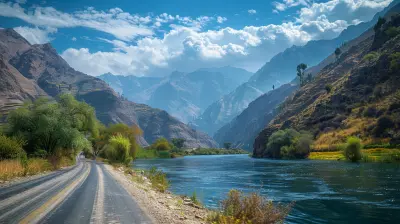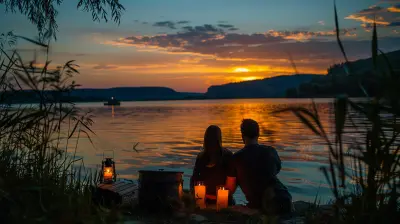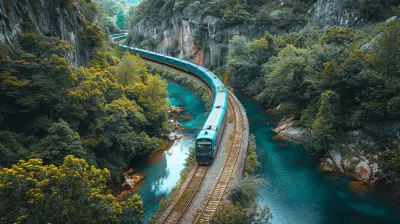Capturing the Perfect Train Travel Photos: Tips and Tricks
16 October 2025
There’s something undeniably magical about train travel. The rhythmic clatter of wheels on steel, the ever-changing landscapes, and the nostalgic charm of locomotives make it an experience worth capturing. But photographing trains—or from a moving train—is an art in itself. If you've ever tried snapping a quick shot from a train window, you know it's not as easy as it looks!
So, how do you make sure your train travel photos are frame-worthy? Let’s dive into some practical tips and tricks to help you capture stunning train photography, whether you're inside a carriage, standing on a platform, or chasing trains from afar. 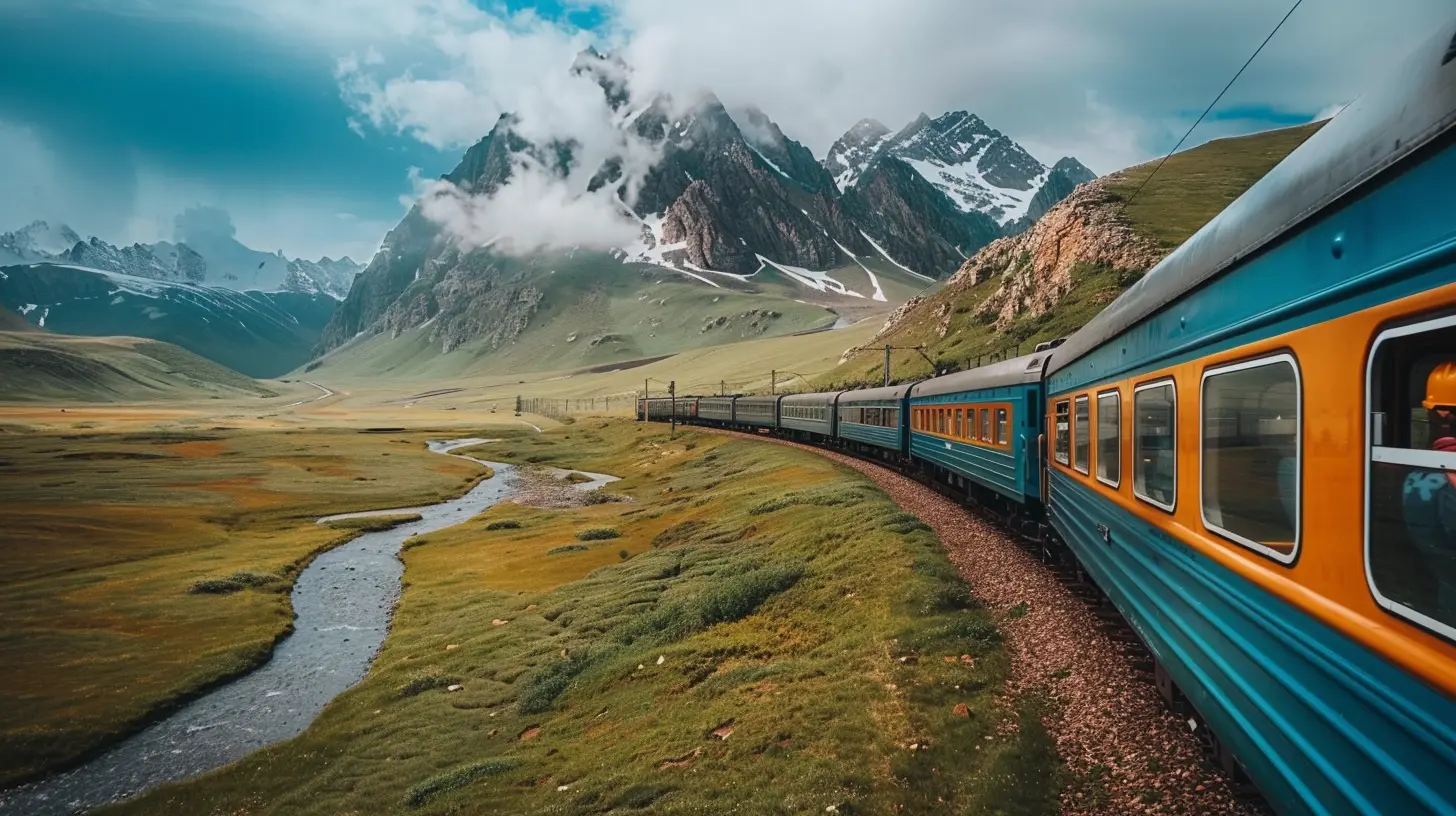
1. Understanding the Best Time for Train Photography
Timing is everything when it comes to photography. The quality of light can make or break your shot, and train photography is no exception.Golden Hour Magic
The best photos often happen during the golden hour—just after sunrise and before sunset. The soft, warm light creates an ethereal glow, making landscapes and trains look even more captivating. Morning shoots often give you misty, dreamy surroundings, while evening shots create long, dramatic shadows.Blue Hour for a Moody Effect
Right before sunrise and just after sunset, the blue hour gives your train photos a moody, cinematic look. This is perfect for capturing city lights reflecting off train windows or a lone train cutting through a twilight landscape.Midday Challenges
Shooting at noon when the sun is high can lead to harsh shadows and overexposed images. If you must shoot during midday, try adjusting your camera settings to compensate or look for shaded areas to soften the light.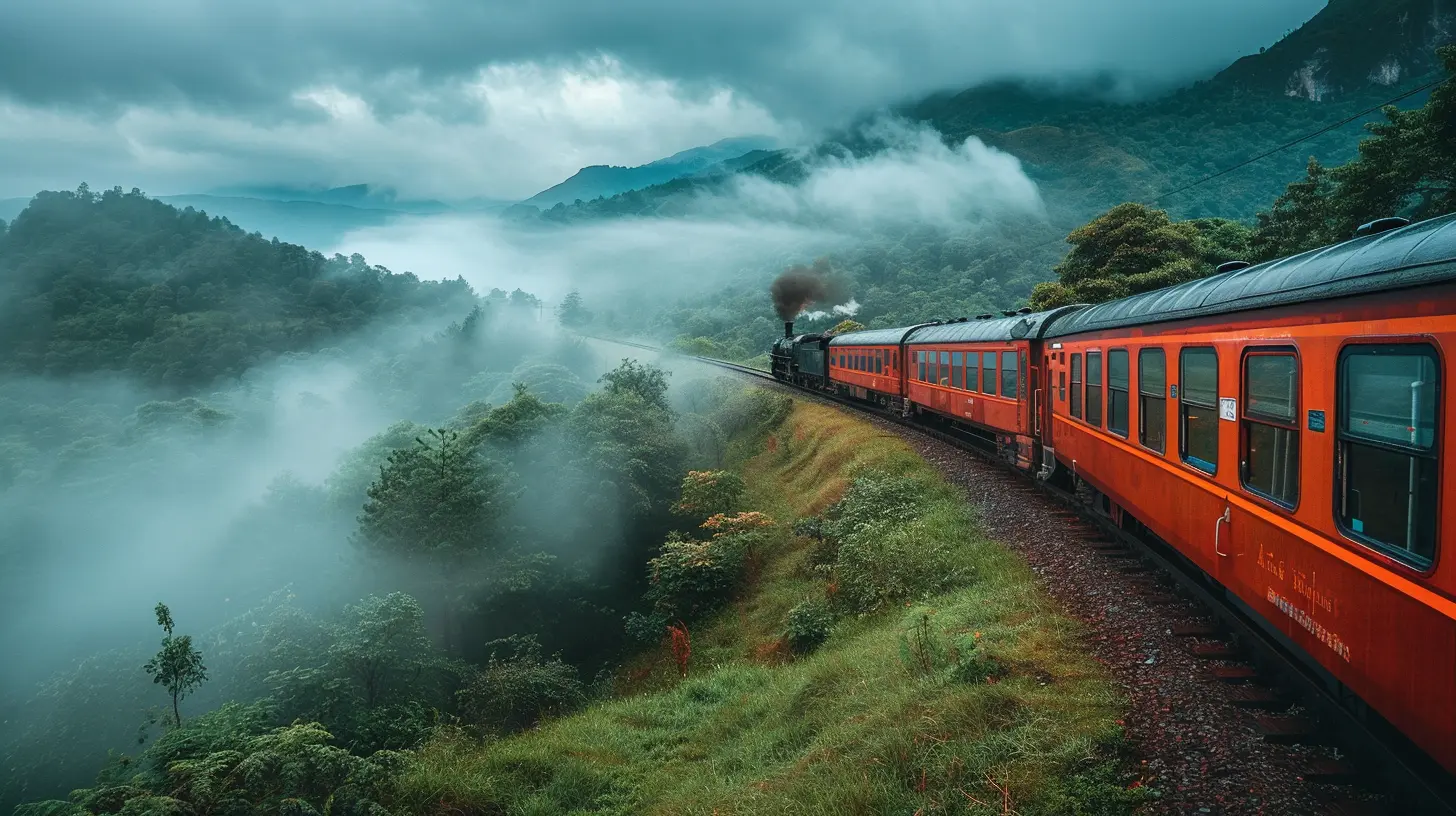
2. Choosing the Right Camera Gear
You don’t need a $5,000 camera to take stunning train travel photos. But having the right gear can make a big difference.DSLR or Mirrorless?
Both DSLR and mirrorless cameras deliver high-quality shots, with mirrorless being more compact—perfect for travel. A versatile zoom lens (like a 24-70mm) will allow you to capture everything from sweeping landscapes to detailed shots of the train itself.Smartphones: Pocket-Sized Power
Smartphones have come a long way in photography. If you're using a smartphone, enable HDR mode to balance light and shadows. Third-party apps like Lightroom Mobile can help you manually control settings for even better results.Accessories to Elevate Your Shots
- Tripod: Essential for low-light shots or long-exposure photography.- Lens Filters: Polarizing filters reduce glare and enhance colors, especially useful for window shots.
- Extra Batteries & Memory Cards: Train journeys can be long—don’t get caught with a dead camera!
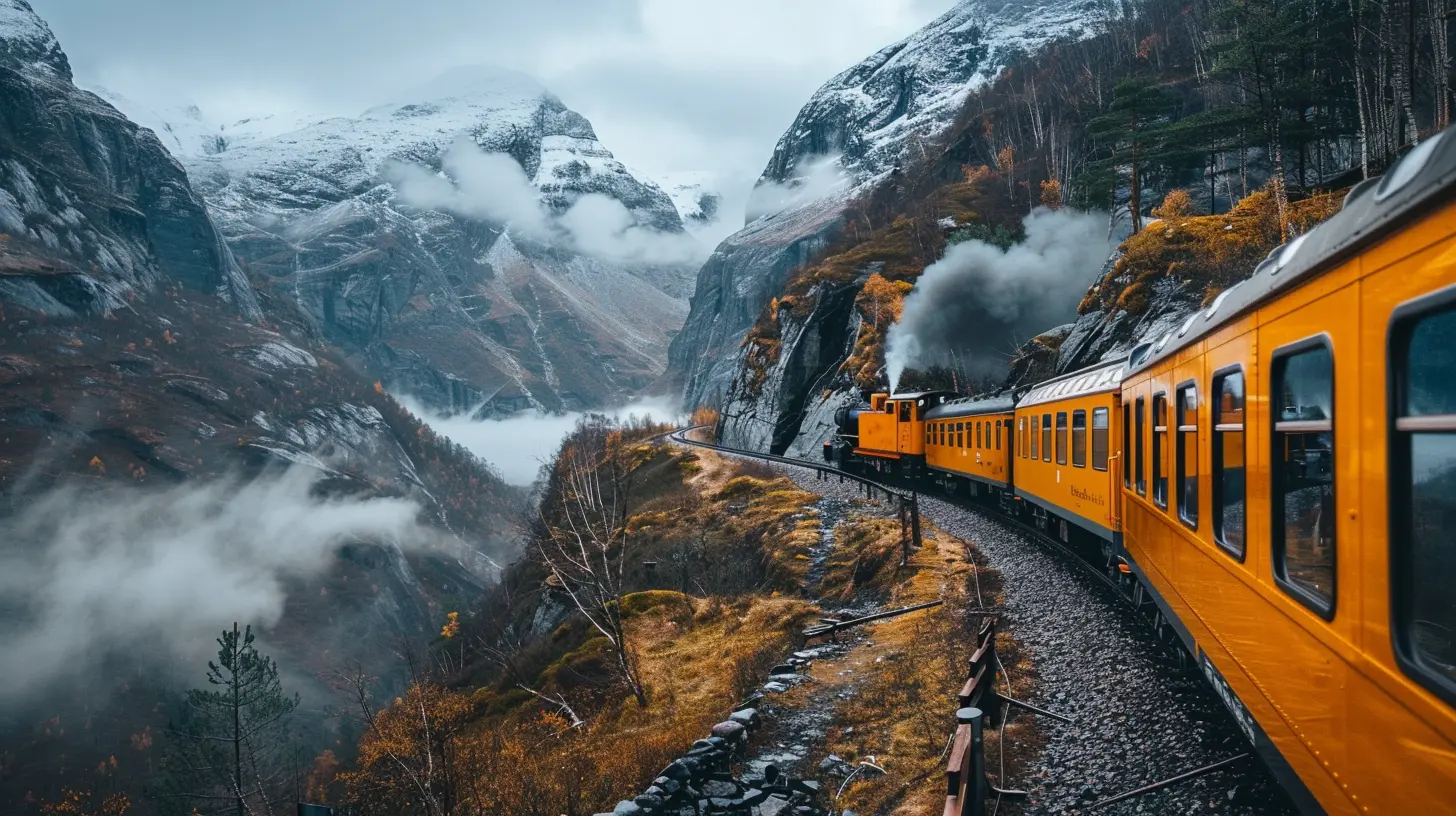
3. Mastering Composition for Train Travel Photography
Composition is the secret sauce of great photography. A well-composed photo tells a story and draws the viewer in.Rule of Thirds
Imagine your frame divided into nine sections. Placing the train (or a subject) along these lines or at their intersections creates a visually appealing balance.Leading Lines for Depth
Trains, tracks, and platforms provide natural leading lines that guide the viewer’s eye into the image. Use them to create depth and perspective in your shots.Framing for a Unique Perspective
Use train windows, doors, or tunnels to frame your shot. This technique draws attention to the subject while adding a sense of depth.Motion Blur for Drama
A slow shutter speed can create stunning motion blur effects, capturing the speed and energy of a moving train while keeping the surroundings sharp.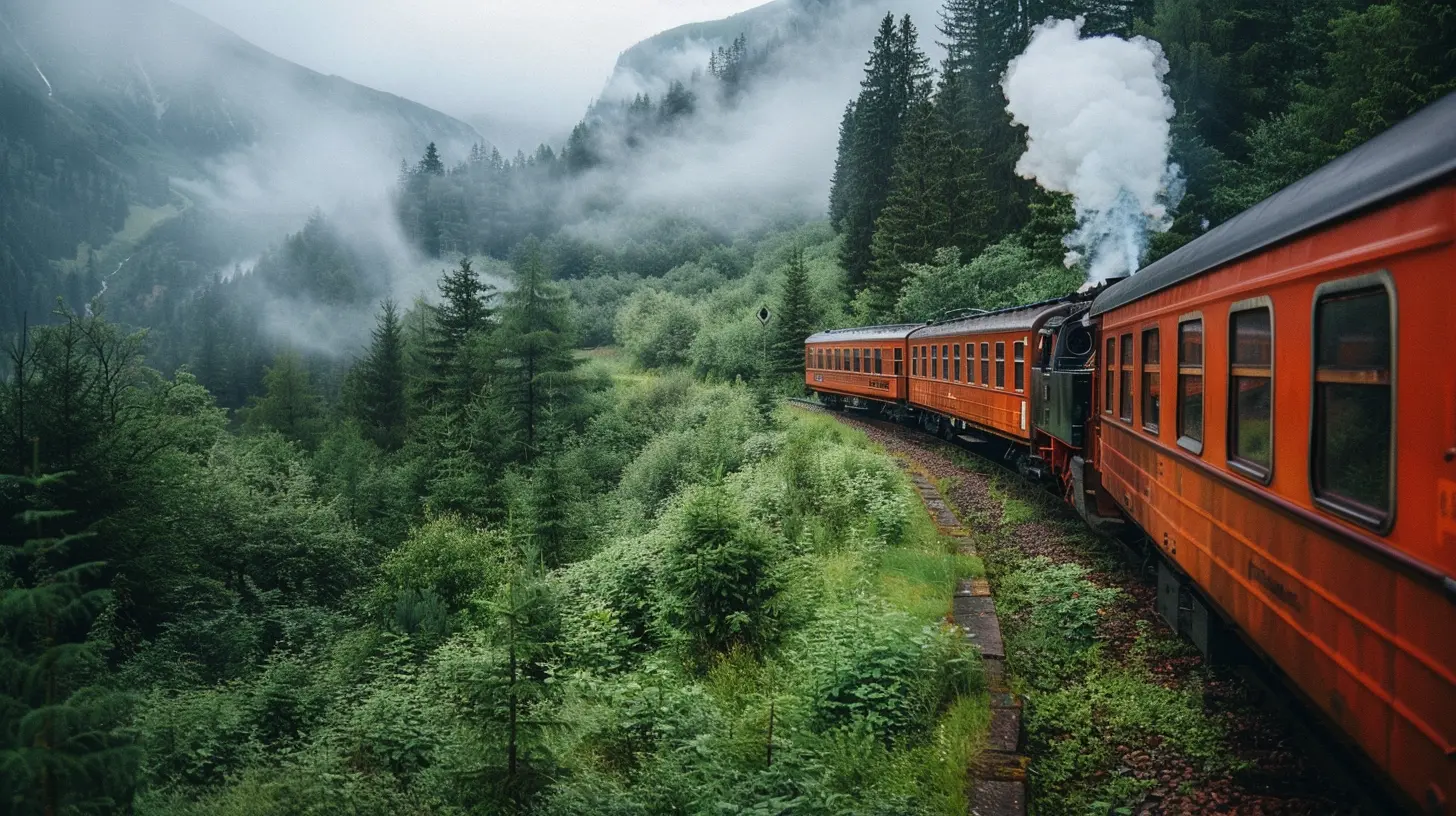
4. Capturing Stunning Window Views
Train window views are one of the biggest highlights of rail travel, but getting a crisp, reflection-free shot is tricky.Avoid Reflections
Reflections from train windows can ruin a great shot. Try:- Pressing the camera lens directly against the window.
- Using a polarizing filter to cut down glare.
- Blocking light with a jacket or hand to minimize reflections.
Focus on the Scene, Not the Window
If your camera keeps auto-focusing on the glass instead of the landscape, switch to manual focus to get a sharper image of the scenery beyond.Capture the Motion
A slightly slower shutter speed (around 1/30 sec) can create a beautiful blur effect of the foreground while keeping distant landscapes sharp. It adds energy to your shots, making them feel alive.5. Candid Train Travel Photography
Train journeys aren’t just about landscapes; they’re about stories. Capturing the passengers, conductors, and small details inside the carriage can add depth to your travel memories.Passengers & Local Life
- Capture a thoughtful gaze out the window, a shared laugh, or someone lost in a book.- Be respectful—always ask before photographing strangers.
Train Interiors & Details
- Zoom in on vintage ticket stubs, luggage racks, or wooden seats in old-style trains.- Shooting from a low angle can emphasize the length of the train carriage, creating a powerful perspective.
6. Platform Photography: Catching the Perfect Departure or Arrival
Platforms are gold mines for photography. The anticipation of departure, the hustle of passengers, and the architecture of stations provide endless creative opportunities.Storytelling Through Motion
- Capture arriving trains with slow shutter speeds to blur their motion.- A stationary subject (like a waiting passenger) against a blurred train creates a dynamic contrast.
Play with Symmetry
Train stations often have perfect symmetry—use it! Center your frame with the tracks leading straight down the middle for a balanced and powerful shot.Light and Shadows
- Morning and evening light filtering through station rooftops can add a dramatic effect.- Experiment with silhouettes by shooting against the light.
7. Editing Like a Pro
Even the best photos can benefit from a little post-processing. Editing helps bring out the colors, fix exposure issues, and enhance the mood of your shots without overdoing it.Basic Edits to Consider
- Adjust Brightness & Contrast: Make sure details are visible.- Boost Vibrancy, Not Saturation: Preserve natural colors while making them pop.
- Sharpen the Focus: Enhance details, especially in landscapes.
- Crop for Better Composition: If something feels off, crop slightly to improve balance.
Using apps like Lightroom, Snapseed, or VSCO can make a huge difference in refining your shots.
8. Safety Tips for Train Photography
No photo is worth risking your safety. Train tracks are dangerous, and some areas may have restrictions on photography.Stay Off the Tracks
It may seem obvious, but too many photographers take risks for the perfect shot. Never stand on active train tracks.Respect Local Rules
Some railways have strict photography regulations. Always check if photography is allowed, especially in subway stations or private railways.Be Mindful of Others
Avoid blocking passenger pathways or making anyone uncomfortable with your photography.Final Thoughts
Train travel photography is all about capturing movement, emotion, and scenery in perfect harmony. Whether you’re documenting breathtaking landscapes from your window, capturing candid moments of fellow travelers, or experimenting with motion blur and symmetry, every shot tells a story.So, next time you hop on a train, keep these tips in mind. With the right timing, composition, and technique, you’ll not only take great pictures—you’ll create lasting memories that transport you right back to those magical journeys.
Happy shooting, and safe travels!
all images in this post were generated using AI tools
Category:
Train TravelAuthor:

Ian Powell
Discussion
rate this article
1 comments
Paul Russell
Enjoy the journey! Each moment captured tells a unique story. Happy travels!
October 26, 2025 at 3:02 AM

Ian Powell
Thank you! Each moment truly is a story waiting to be told! Happy travels to you too! 🚂📸
